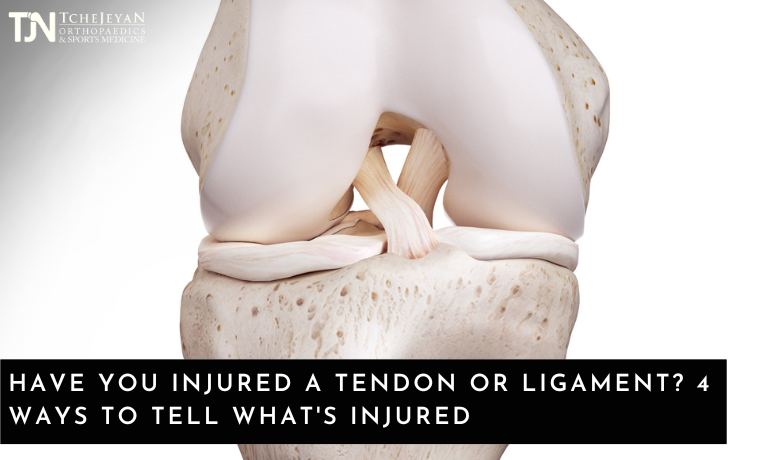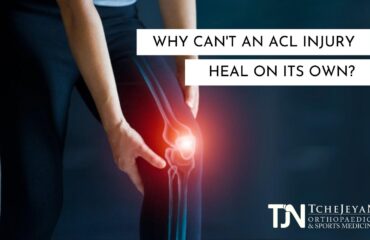Knee injuries can sideline you quickly. When you get a knee injury, you are often tempted to dismiss it as “just a strain or sprain.” The last thing you want is a severe knee injury, knowing it might mean curbing your activities for an extended period. However, dismissing an injury as minor can sometimes be a big mistake.
Failing to address a critical injury can lead to long-term damage or disability, even if only soft tissue is involved. Instead of brushing off your injury, look for clues that can help you determine whether it is a damaged tendon or ligament, and then have your injury addressed by an orthopedic specialist.
1. You Have Limited Mobility
Tendons are tough connective tissues that attach muscles to bones. The knee has four main groups of tendons that assist with movement. They are the iliotibial band, patella tendon, quadriceps tendon, and hamstring tendons. These tendons allow the typical hinge movement you experience. Depending on your injury, one or more of these tendons can be involved.
When you damage one of these tendons, performing normal movements can be especially difficult or painful. That’s why limited mobility indicates that your injury includes tendon damage. Dr. Tchejeyan, the L.A. Knee Guy at Tchejeyan Orthopaedics and Sports Medicine in Thousand Oaks, California, can perform diagnostic tests on your knee to confirm a tendon injury.
2. You Have a Displaced Joint
In addition to assisting with movement, tendons of the knee also hold the joint together. For example, the kneecap is held in place by your patellar tendon.
Tendons can withstand intense pressure but will occasionally tear or rupture. The kneecap is often visibly out of place when the patellar tendon is torn or ruptured. If your knee pain is accompanied by displacement, it is a good idea to talk with a specialist to see if you have a tendon injury.
3. There Is a Lack of Joint Stability
Ligaments, like tendons, are also strong connective tissues, but ligaments connect bones to other bones. Ligaments provide stability to the joints, keeping the bones aligned with one another. If you notice a lack of stability in your joint and the feeling that your knee will “give way,” accompanied by joint swelling and pain, there is a good chance you have damaged a ligament.
The two main ligaments in your knee are the anterior cruciate ligament (ACL) and the posterior cruciate ligament (PCL). A torn ACL is a very common knee injury, particularly for athletes. The injury often occurs when a person makes a sudden turning or twisting movement and also from suffering an impact, particularly a side impact to the knee. When someone has an ACL tear, the ACL can be reconstructed by replacing the damaged ACL with another ligament. The replacement tissue is usually taken from the patient’s hamstring and grafted into place. If you need ACL surgery, your surgeon will likely schedule it several weeks after the injury to allow swelling to subside.
4. An Impact Moved Your Knee Past Its Usual Range of Motion
The knee moves forward and back like a hinge; it does not bend backward and has limited lateral movement. However, sudden impacts can force the joint to move beyond its normal range of motion. This is called hyperextension, and it can easily cause damage to the ligaments of the knee. If a popping sound accompanies a sudden impact, it may indicate a ruptured ligament.
Whether you have an injured tendon or ligament, remember that soft tissue knee injuries require proper diagnosis. The earlier the diagnosis is made, the sooner you can get on the road to recovery. Tchejeyan Orthopaedics and Sports Medicine offers comprehensive diagnostic and treatment services for knee injuries. During your exam, we will work to uncover the type of soft tissue damage you have sustained by conducting a physical exam, asking you questions, and taking some images. Together, we will schedule and design an appropriate treatment protocol. If you suffer from a torn knee tendon or ligament injury, contact Tchejeyan Orthopaedics and Sports Medicine to schedule an appointment.




